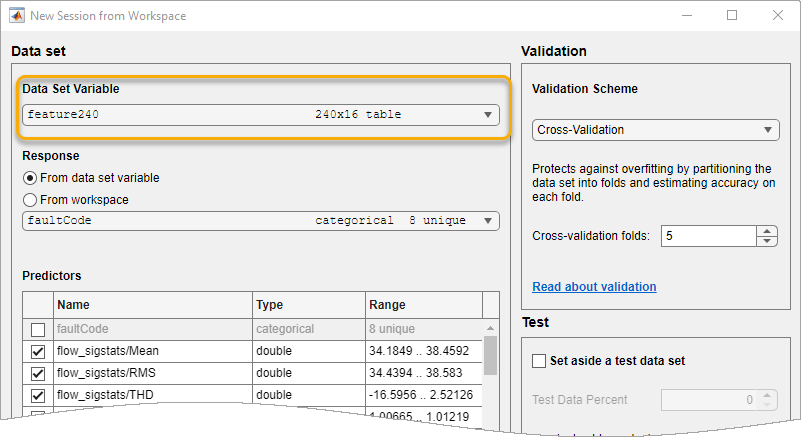

Note that in the example above, I made the axis cover the entire figure (no gray area in the figure). The same holds for the other two margins: Here you can see the bottom and left margins equal to 10mm. If you want to try this yourself, just be aware that some viewers ( Adobe Reader) might be using a custom DPI not matching the system default resolution (mine at 96 pixels/inch).
SET MATLAB PDF
Without a printer at hand, I am using a virtual screen ruler to check the measurements Simply display the PDF file with your preferred viewer, and the set the zoom level at 100% (I am using Sumatra PDF). Set(hFig, 'Units','centimeters', 'Position',/2) %# figure size displayed on screen (50% scaled, but same aspect ratio) YSize = Y - 2*yMargin %# figure size on paper (widht & hieght) XSize = X - 2*xMargin %# figure size on paper (widht & hieght) YMargin = 1 %# bottom/top margins from page borders XMargin = 1 %# left/right margins from page borders Below is an example for producing a PDF file with dimensions 420 x 297 mm (A3 size), where the margins between the plot and the file borders are 10 mm each (top,bottom,left,right). Otherwise, the above explanation & official matlab docs is doing the job for value class getter/setters.As explained, you need to set the Paper*** properties of the figure.

myclassinstance.MyProp will work without any just as well.įinally, getters/setters for value classes are something that in my 7 years of matlab oop, so my advise would be to go with handle classes and enjoy happy matlab coding :-) Of course it goes without saying that you dont need to define a getter if you just want to return the value, i.e. Now, regarding setters/getters: for handle classes, everything feels java-ish now: classdef M圜lass < handleįunction set.MyProp(this, value) %Note: setMyProp is also valid! this is more native to matlab-style, but somehow makes it harder to see you're calling an objects method. Mind you, this is the java-perspective (and also my favourite one), the above function call is equivalent to mymethod(myclass,arg1,arg1). % Note that the name you choose for "this" is arbitrary! So for a function call myclass.mymethod(arg1,arg1), the declaration must be function mymethod(this, arg1, arg2) Be aware that the default is just set for the current. set (groot, 'defaultFigureRenderer', 'painters') You can check by get (groot,'default'). In your case it would be: set (0, 'defaultFigureRenderer', 'painters') respectively. instead, the convention is that the class instance will be prepended to the function's argument list. As you can see here you can build every 'default property' you wish by concatenating default + class name + property.

in OOP you'd have A(1)=-1 now as everythings an object reference.įurthermore, "native" matlab routines dont have a "this/self/me" variable that contains the instance reference to access from within functions. if you now set B(1) = -1 you'd hope that A(1) is still 1, right? this is because matlab keeps track of "copies" and truly creates them as you modify different variables initially set to the same matrix. Imagine you have a matrix A =, then assign that via B = A. The reason they have both in Matlab is that in Matlab you would expect the "value" behaviour natively.
SET MATLAB FULL
"value" classes are always returning a full clone of whatever object (which has been modified by what you just did, e.g. proper object instances with pointers to them. "handle" classes are what your mind is set to. % p2 is also an instance of Polynomial with p's state at assignmentĪnd of a Handle class is % db is an instance of Database To paraphrase their illustration, the behavior of a Value class is % p is an instance of Polynomial The Mathworks has a good rundown on this topic.

Since your class is currently a subclass of the default Value class, your setters need to return the modified object: function obj = set.name(obj,name)įrom the documention: "If you pass to a function, the function must return the modified object." And in particular: "In value classes, methods.


 0 kommentar(er)
0 kommentar(er)
